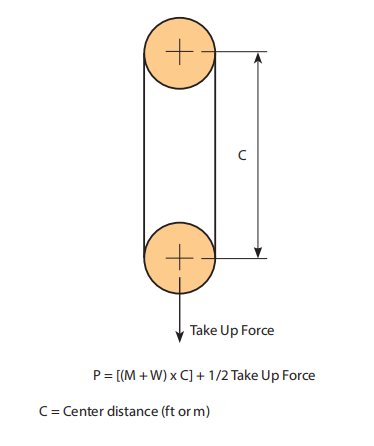Introduction
A cautious evaluation of the conditions surrounding a conveyor is necessary for precise conveyor chain variety. This section discusses the basic concerns demanded for effective conveyor chain choice. Roller Chains are often made use of for light to reasonable duty materials managing applications. Environmental disorders may possibly demand using special resources, platings coatings, lubricants or even the means to operate devoid of more external lubrication.
Standard Information Expected For Chain Choice
? Type of chain conveyor (unit or bulk) such as the process of conveyance (attachments, buckets, by rods etc).
? Conveyor layout together with sprocket spots, inclines (if any) as well as number of chain strands (N) to get applied.
? Amount of materials (M in lbs/ft or kN/m) and form of material to become conveyed.
? Estimated bodyweight of conveyor components (W in lbs/ft or kN/m) which includes chain, slats or attachments (if any).
? Linear chain speed (S in ft/min or m/min).
? Environment by which the chain will operate together with temperature, corrosion circumstance, lubrication condition and so forth.
Phase one: Estimate Chain Tension
Utilize the formula beneath to estimate the conveyor Pull (Pest) and then the chain tension (Test). Pest = (M + W) x f x SF and
Test = Pest / N
f = Coefficient of Friction
SF = Pace Component
Phase 2: Create a Tentative Chain Variety
Applying the Check value, create a tentative selection by selecting a chain
whose rated functioning load better compared to the calculated Test value.These values are appropriate for conveyor service and are diff erent from people proven in tables with the front in the catalog that are linked to slow velocity drive chain usage.
In addition to suffi cient load carrying capability usually these chains must be of the particular pitch to accommodate a desired attachment spacing. Such as if slats are to become bolted to an attachment every 1.5 inches, the pitch in the chain selected must divide into one.5?¡À. As a result one could use a forty chain (1/2?¡À pitch) together with the attachments every 3rd, a 60 chain (3/4?¡À pitch) together with the attachments every 2nd, a 120 chain (1-1/2?¡À pitch) together with the attachments just about every pitch or perhaps a C2060H chain (1-1/2?¡À pitch) with the attachments every pitch.
Phase 3: Finalize Choice – Determine Actual Conveyor Pull
Soon after generating a tentative variety we have to confirm it by calculating
the actual chain stress (T). To try and do this we will have to fi rst calculate the real conveyor pull (P). From your layouts proven around the appropriate side of this webpage opt for the acceptable formula and calculate the total conveyor pull. Note that some conveyors could be a mixture of horizontal, inclined and vertical . . . in that case calculate the conveyor Pull at each section and include them together.
Step 4: Calculate Optimum Chain Tension
The utmost Chain Tension (T) equals the Conveyor Pull (P) as calculated in Phase three divided by the quantity of strands carrying the load (N), instances the Speed Aspect (SF) proven in Table two, the Multi-Strand Aspect (MSF) shown in Table 3 as well as Temperature Element (TF) proven in Table four.
T = (P / N) x MSF x SF x TF
Stage 5: Examine the ?¡ãRated Working Load?¡À from the Picked Chain
The ?¡ãRated Working Load?¡À in the selected chain need to be higher than the Optimum Chain Stress (T) calculated in Phase four over. These values are suitable for conveyor services and therefore are diff erent from individuals proven in tables in the front from the catalog that are linked to slow pace drive chain utilization.
Phase 6: Test the ?¡ãAllowable Roller Load?¡À on  the Picked Chain
the Picked Chain
For chains that roll to the chain rollers or on top rated roller attachments it can be essential to verify the Allowable Roller Load?¡À.
Note: the Roller load is established by:
Roller Load = Wr / Nr
Wr = The total excess weight carried by the rollers
Nr = The amount of rollers supporting the bodyweight.
